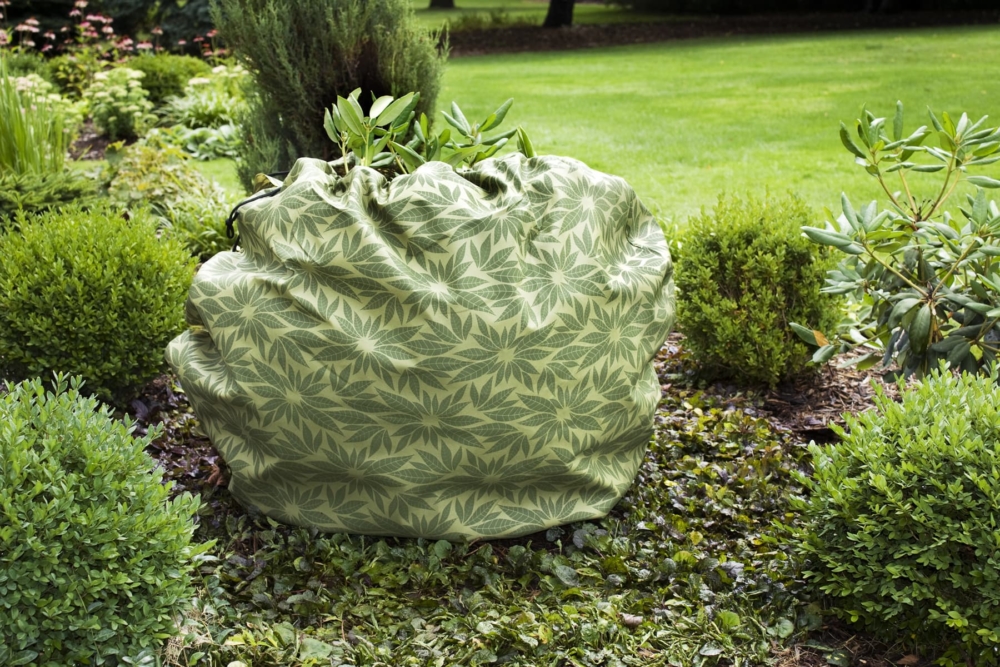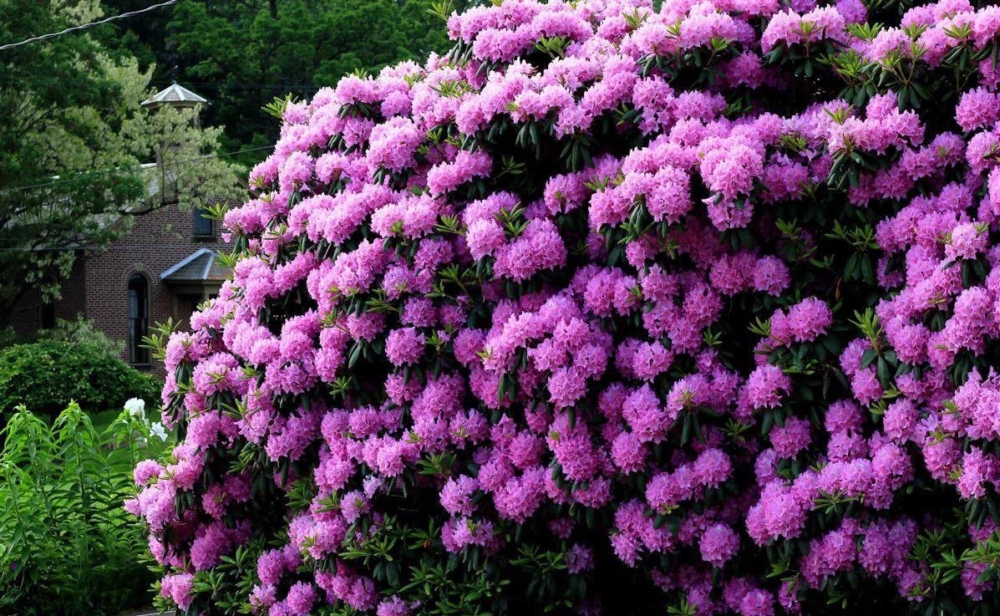Today, the agricultural market presents a huge variety of ornamental shrubs that are widely used in landscape design. The rosewood is very popular for its beautiful flowering and excellent external characteristics. Actually, therefore, it is worthwhile to figure out what planting and care are required for the rhododendron in the Urals.
Material Content:
Varieties of rhododendron for growing in the Urals
In fact, there are more than 800 varieties of rhododendrons, with each having its own characteristics and differences. There are winter-hardy varieties that are most often planted in regions with a cold climate. These varieties and forms include the following shrubs of the Heather family:
- Daurian;
- Ledebour;
- Schlippenbach;
- Nova Zembla;
- "Rose Elegance".
In addition, the considered vegetation agronomists are divided into groups, namely:
- deciduous;
- semi-evergreen;
- evergreens.
When choosing a variety for planting in the Urals, it is necessary to carefully study its features, learn about its winter hardiness. The sapling must necessarily withstand the temperature regime up to -35 degrees without any winter shelter. Everything else relates to the taste preferences of the gardener.
What problems can be encountered
There are several difficulties that a gardener may encounter when growing a rhododendron. Most often, the cause of the problem is:
- Incorrect landing. In this case, the evergreen shrub becomes dull, the leaves brighten and fade. This can happen if the plant and its root system lack oxygen.This is due to waterlogging of the soil or due to stagnation of water, and maybe, conversely, due to lack of water and fertilizers. A transplant can fix the situation; for a bush, you should arrange a seat with a good drainage system and fertile soil.
- Adverse wintering. It is also a common problem when the bush begins to hurt and wither, and flowering becomes weak or absent altogether. That is why experienced farmers advise planting a plant in a place where there are no drafts and strong winds. And also wrap it up for the winter and equip a protective screen, then the soil will not freeze.
- Weak flowering. In this case, the problem can be eliminated by improving the conditions of detention. In addition, it is necessary to immediately cut off all the inflorescences that have already faded, and new ones must be removed so that they are not tied. The plant should rest and gain strength until the next color.
It is also important to feed the flowering bush on time, regularly carry out watering procedures, then difficulties in maintenance should not happen.
Outdoor landing
In order to grow a healthy and actively growing rhododendron bush, which will annually please with abundant flowering, it must be properly planted in open ground.
The landing technology is as follows:
- Planting of seedlings is carried out either in early spring or in autumn, but for regions with cold climatic conditions, it is preferable to carry out planting activities in the spring. In this case, the young bush will have time to take root and grow stronger until the first frost.
- Gardeners should prepare a seat in advance, the pit should have a depth of about 40 cm and a width of 60 cm.
- At the bottom should be covered with special soil, which includes high peat and loam with pine needles, while it is necessary to observe a 2: 1 ratio.
- The soil that has been poured should be thoroughly tamped, and then dig holes of a suitable size and plant seedlings in them.
- Planting material must be prepared before planting. To do this, the container into which the planted plant needs to be filled with water, then the shrub can be removed without damaging the root system.
- In a dug hole, lay a good layer of drainage so that moisture does not stagnate at the roots. To do this, you can take broken brick, gravel or gravel.
- Put the bush in the hole, carefully spread the roots. And then fill it with fertile soil, but in such a way that the root neck is just above the soil.
After planting, the plant should be shed abundantly with settled or rain water. And also to mulch the near-trunk space, then the earth will not dry out. In addition, mulch prevents weeds from growing. Peat, tree bark or needles are perfect for this. By the way, mulch also protects the roots from freezing.
Evergreen Shrub Care
The content of rhododendron, as well as its care in the Urals, is the same as in other Russian regions. The only difference is a more thorough preparation procedure for the winter period. The rest of the care is as follows:
- regular watering;
- periodic fertilizer application;
- pest prevention;
- sanitary and decorative trimming.
Observing these elementary requirements, you can get a beautiful, lush and flowering shrub in the garden.
As for watering events, the bushes need a lot of water, as they relate to a moisture-loving crop. An adult bush will be enough two waterings per week. But in the period of ovary buds, this number must be increased to three. They love this plant and air moisture, so they can be sprayed additionally.
Irrigation water must be soft, rain liquid is best for them. You can also add oxalic acid to it, this will positively affect the growth and development of vegetation.
For this representative of the heather family, the root system is located practically on the surface of the earth, therefore it is not recommended to loosen the weed, as it is possible to accidentally damage the roots. It is best to mulch the soil from time to time.
As for fertilizer application, here you need to adhere to some rules, namely:
- The first feeding is carried out in early spring, it is best to select nitrogen compounds or use special purchased fertilizers designed specifically for heather.
- The second is carried out after the bush has flowered, at which time superphosphate or ammonium can be added.
Before wintering, the plant is not fertilized, as this can provoke the growth of new shoots.
Winter Shelter Rules
As for the shelter of rhododendrons for the winter, then this issue should be taken seriously. This must be done carefully, and most importantly, in a timely manner, otherwise the bush will simply die. It is necessary to cover the vegetation before the first frosts come.
First, they cover the root system, for this they use peat and spruce branches, and fallen leaves are also an excellent insulation. After that, they proceed to the upper part of the bush, bend the branches to the surface of the soil, fix them there, and then put the spruce on them. Shelter is removed only in April, after good weather normalizes, and at night the temperature will not go to minus.
Breeding methods
Rosewood can be propagated in many ways, experienced gardeners do this with:
- seed;
- cuttings;
- layering.
Although varietal species can only reproduce in the last two ways, they should be considered more carefully:
- To propagate the plant by layering it is necessary to choose the strongest shoot, which can be easily bent to the ground. Then it should be lightly dug into the ground, it is best to do this in the middle of the appendix. But before that, with a sharp knife, you need to make a small incision, remove the bark in this place. In this case, the roots hatch much faster. After that, you need to water this place. Already in the spring it will be possible to separate the process and plant it in the right place.
- If you plan to propagate by the method of cuttings, then in the summer period you need to cut the cuttings from the bush, their length should vary from 8 to 12 cm. At the bottom, the cut should be oblique, and on the top there should be 2-3 leaves. After this, it is necessary to treat the planting material with a special growth stimulator, leave it in solution for 10-15 hours. Then put the finished cuttings in a substrate, which consists of peat and sand. Sprinkle lightly with water and cover with plastic wrap.
Within a month, the seedling will give its own roots and it can be transplanted into a separate pot. But it is worth considering that before that the temperature in the mini-greenhouse should be about 25 degrees. It is worth noting that with this method of propagation, the rosewood blooms the very next year. But it is better to let the plant gain strength, and for this you should cut off the buds.
Protection against diseases and pests
In fact, the representatives of the Heather family with proper care are extremely rare. But still, inexperienced gardeners can face the following pests:
- Slug or caterpillars. If the plant is planted in the shade, then these harmful insects may appear under the foliage, usually they are simply removed from the shrub with your hands.
- Weevil. These phytophages are very fond of rosewood, so they often choose it as a home. The most effective remedy for this insect, as well as for ticks, is Diazinon. With the help of this tool, processing is carried out, moreover, not only a bush is sprayed, but also the earth around.
- Scale shield and white aphid. Frequent guests on the rhododendron, “Karbofos” will help get rid of these pests, you can purchase it in any agricultural store.
In addition, the breeders of this plant can face a number of diseases. Most often, the bush suffers from rust and spotting.Usually these diseases appear due to improper care, namely non-compliance with the irrigation regimen. The disease is expressed in the form of yellow spots on the foliage. To eliminate the problem, it is recommended to use fungicides.
















